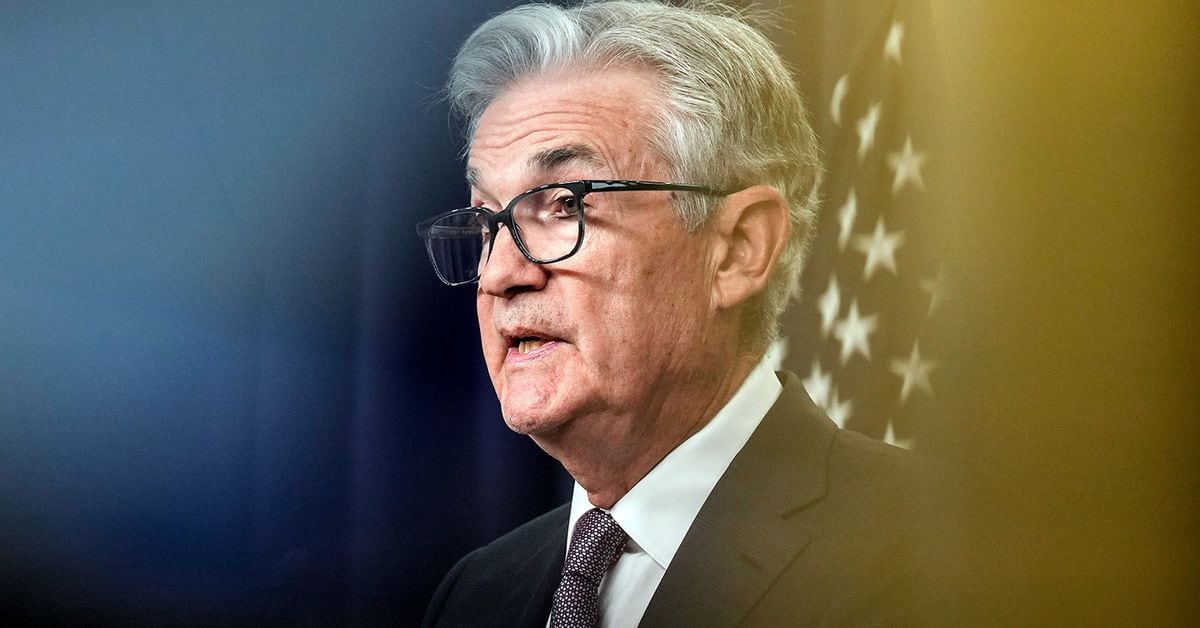$22 Trillion in US Banking System Backed by Just $225 Billion at FDIC: Bitcoin Supporter Gabor Gurbacs
A strategy advisor at Vaneck/MVIS highlights the difference between the money held at the Federal Deposit Insurance Corporation (FDIC) and the amount of money sitting in the US banking system.
In a series of viral tweets, Gabor Gurbacs examines the latest data from the FDIC – an American agency tasked with maintaining stability and public confidence in the nation’s financial system.
According to the FDIC, $124.5 billion is currently on the agency’s balance sheet, with an additional $100 billion line of credit available from the U.S. Treasury Department, for a total of $224.5 billion.
It can be compared to a staggering total of more than 22 trillion dollars in the American banking system, says Gurbacs.
The renewed scrutiny of the FDIC’s balance sheet comes amid the collapse of Silicon Valley Bank, which closed its doors after losing $1.8 billion selling mostly U.S. bonds that are supposed to offer banks a safe way to diversify.
However, the price of these bonds has fallen significantly due to the Federal Reserve’s steep interest rate hikes.
Many in the startup community, which Silicon Valley Bank largely catered to, are asking the US Treasury Department to step in and save the bank, as happened during the 2008 financial crisis.
US banks join the FDIC in promising customers that deposits up to $250,000 will always be covered in the event of a collapse.
But everything in excess is not insured.
The United States and most nations around the world support a system known as fractional reserve banking, which requires banks to hold a small percentage of their deposit liabilities in liquid assets as a reserve, while being free to lend the rest to borrowers.
It’s a system that the pseudonymous creator of Bitcoin, Satoshi Nakamoto, called out as a core reason why he, she, or they created the leading cryptocurrency.
“The root problem with conventional currency is all the trust required to make it work. The central bank must be trusted not to debase the currency, but the history of fiat currencies is littered with breaches of that trust. The banks must be trusted to hold our money and transfer it electronically, but they lend it out in waves of credit bubbles with barely a fraction in reserve. We have to trust our privacy, trust that they won’t let identity thieves tap our accounts. Their huge fixed costs make micropayments impossible…
With e-currency based on cryptographic proof, without the need to rely on a third-party intermediary, money can be secure and transactions hassle-free.”
Unlike the modern banking system, Bitcoin is supported by its core technology of validating and securing transactions without an intermediary, its strict scarcity with a total of 21 million coins, and its decentralized network of users who run the network and hold their capital in BTC.
Billionaire Elon Musk posted a tweet in light of the Silicon Valley Bank collapse, which follows a steep fall in the price of Bitcoin following the fall of crypto-friendly bank Silvergate.
Silvergate cited “recent industry developments” as well as “investigations by our banking regulators, congressional inquiries and investigations by the US Department of Justice” as the main reasons why the bank decided to close its doors.
Bitcoin has been in the middle of a volatile recovery after falling to around $16,000 late last year due to the collapse of offshore Bahamas-based crypto exchange FTX.
FTX is accused of essentially stealing and gambling its users’ funds, and founder Sam Bankman-Fried is now facing 115 years in prison for a wide range of charges, including wire fraud and securities fraud.
Don’t Miss a Beat – Subscribe to get crypto email alerts delivered straight to your inbox
Check price action
Follow us on TwitterFacebook and Telegram
Surf The Daily Hodl Mix
Featured Image: Shutterstock/Lightboxx/NASA Images


